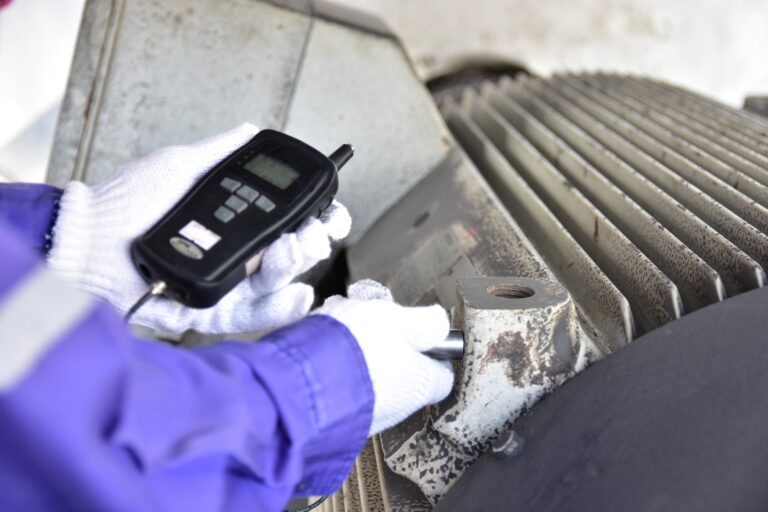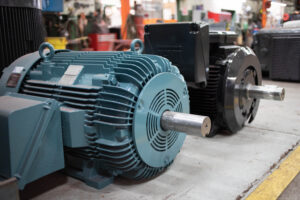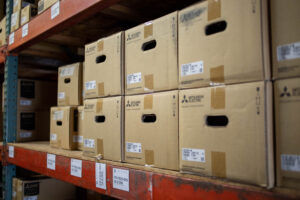
What is the recommended vibration analysis equipment?
When your car begins to make a strange noise, do you wait until you’re stranded on the side of the road to call a mechanic? Not if you know anything about cars. You should get your car to the mechanic as soon as you hear that strange noise, because at that point it will hopefully just be a small fix that won’t cost you too much money. You know as soon as the problem has progressed to the point where you are stranded on the side of the road, your bill has skyrocketed; as well as the time it will take to fix your car will have greatly increased. This is very similar to vibration issues in your equipment. You should be fixing your equipment at the first signs of a vibration issue, to prevent a much more costly issue from occurring down the road.
How do These Systems Work?
In almost all scenarios a sensor is mounted to your machine; this sensor will send the information it collects to a vibration analyzation program either through a cloud collection service, or through a portable data collector, that will read the incoming electrical voltage and generate a time waveform. This will compare the amplitude of vibration versus time. Most analyzers will transform the time waveform into a frequency spectrum using the Fast Fourier Transform process. The frequency spectrum will plot vibration amplitude vs frequency. This allows the technician to detect a wide range of machinery faults earlier than normal and perform any needed maintenance to prevent a critical failure that could result in unscheduled downtime.
Portable Data Collector
These types of vibration monitoring systems must be applied to your machine and then interpreted by a technician each and every time you want to get measurements. A vibration analyst walks-down the critical equipment in your plant and collects vibration data on them using the data collector. The data is then stored on the portable analyzer and is downloaded to a computer where the analyst can perform a detailed vibration analysis. These types of data collecting systems can cost anywhere from $20,000 to $100,000. While this is one of the more expensive options, it can be scaled to fit your exact needs. Some plants will schedule a walk-through once a month, while others will only schedule them twice a year. This type of vibration monitoring can be contracted out or done in house if your staff is willing to be trained. The overall flexibility of this method is what makes it attractive to many business applications.
Wired Monitoring
With these types of monitoring devices, data is continuously uploaded typically every second. Alerts are only sent when issues are identified. You can then connect a computer to this device and log into the system to perform a detailed analysis. Many wired systems have a trip function that can shut off machinery when a certain vibration level is reached. These systems, depending on manufacturer, do have the option of being monitored remotely, or you can opt to have your technician present to download the readings. Wired monitoring systems are very expensive, typically in the hundreds of thousands of dollars price range.
Wireless Monitoring
Every company that sells vibration monitoring systems now has a wireless option. Some are battery powered and some will require a hardwired connection to power. These systems don’t typically gather information quite as fast as wired systems, but will still collect it in a matter of seconds rather than minutes. They vary greatly in cost depending on the manufacturer, but typically cost upwards of $5k-$10k per machine you are monitoring, purely in equipment costs.
Bluetooth Monitoring
This is the newest type of vibration monitoring systems on the market. It will typically only collect data once every five minutes as opposed to every few seconds like other types of monitoring. One of the most popular devices on the market will automatically collect FFT and time waveform data for detailed analysis, but only when the device detects levels in alarm on two consecutive readings. They are, overall, fairly inexpensive. For under $500 you can install the sensor on your equipment and download the application on your phone or tablet to be able to monitor your machinery from close by.
Benefits of Continuous Monitoring
Continuous monitoring is great for catching significant issues before they cause unscheduled downtime; in addition to diagnosing issues that may have already occurred. Machine performance is optimized by monitoring for even the slightest changes and allowing your technicians to correct them in a timely manner. Monitoring of critical and heavy use equipment can protect your bottom line by preventing critical failures. Monitoring difficult to access equipment can keep your maintenance staff safe by allowing them to monitor for issues remotely, rather than scale the side of a building to perform preventive maintenance on your equipment that may be unneeded.
Got More Motor Questions? We Can Help!
Call 800-595-5315 Or Connect With Our Expert Technicians Here:
Other Articles
- How to Reduce Motor Downtime and Keep Your Motor Happy
- Critical Spare Planning
- The Three Most Common Externally Caused Motor Failures






